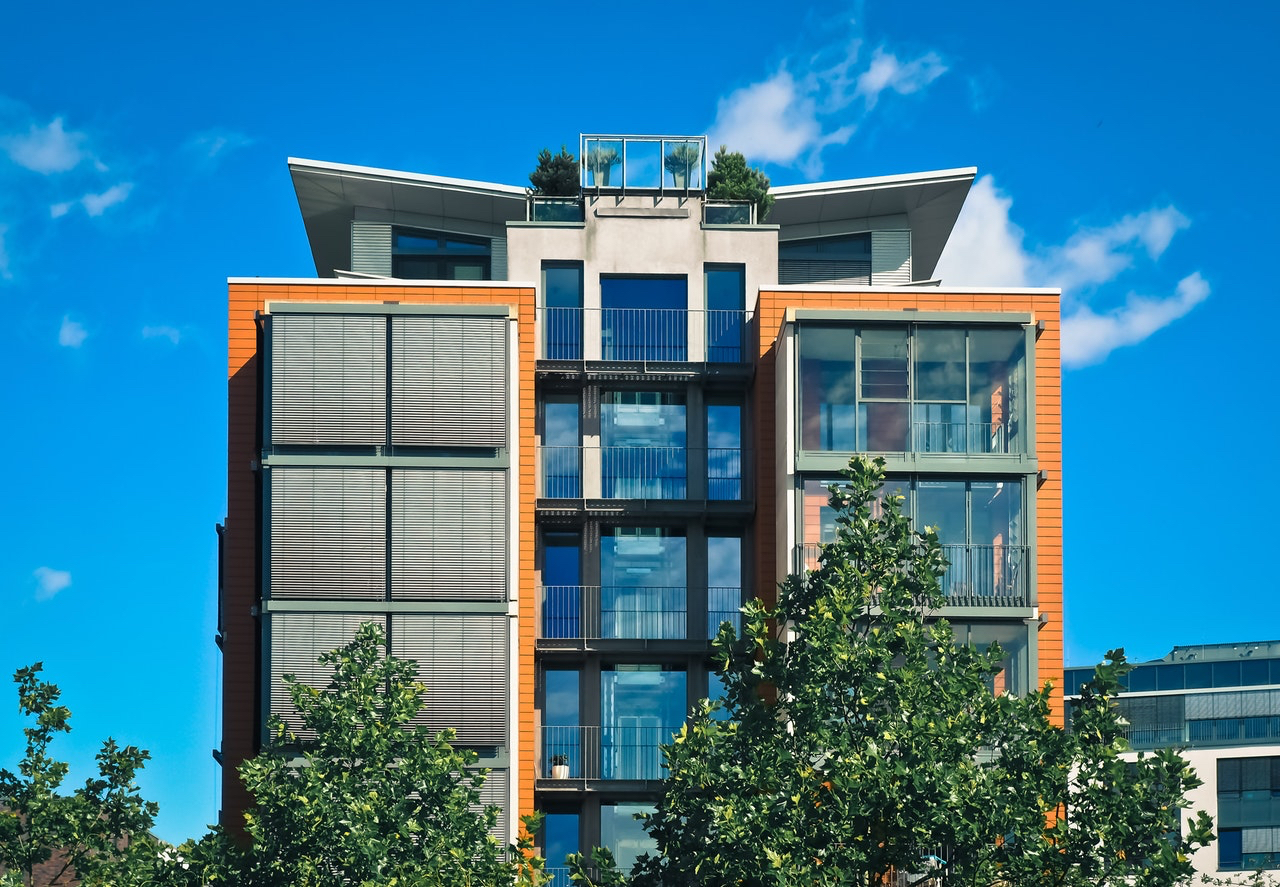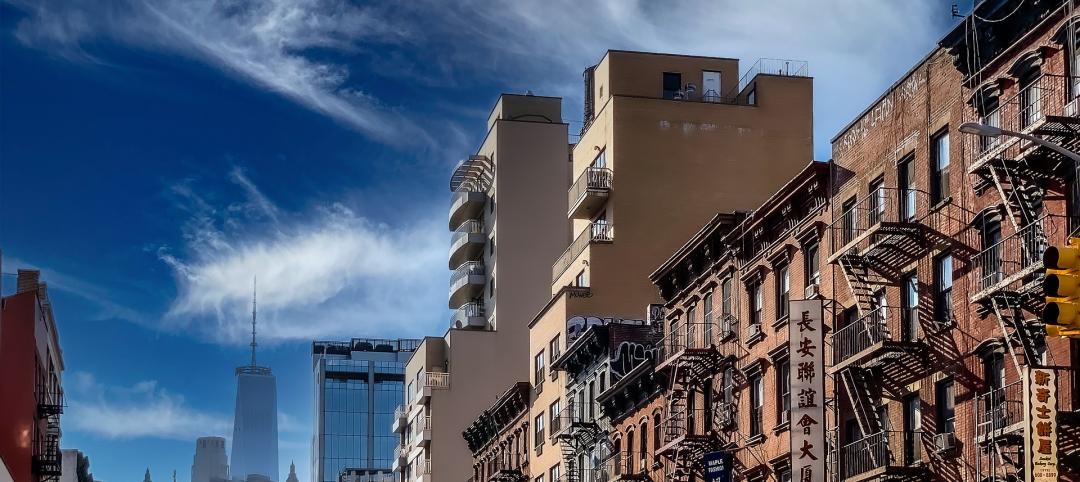Brace yourself. I’m about to unleash a tsunami of data to make the argument that the multifamily market is still going strong, despite all the sturm und drang about the coming global economic slowdown and its possible negative effect on apartment starts. Thanks to economist Danushka Nanayakkara-Skillington, the NAHB’s Assistant Vice President for Forecasting & Analysis, and Robert Dietz, PhD, NAHB Chief Economist, who presented the data at the 2019 NAHB International Builders’ Show.
Multifamily housing starts should hit 379,000 units this year. That’s 2% down from 2018’s 386,000, but well ahead (by 10%) of the average for multifamily starts from 2000 to 2007 and not that far off of the post-recession high of 394,000 in 2015.
Multifamily’s share of total housing under construction continues to run in the mid- to high-50% range. That’s probably because single-family construction has still not fully ramped up, although its slope is still up and to the right.
Rental production continues to dominate multifamily construction. The built-for-rent share of multifamily construction has held steady in the 90-95% range for the last five years. Somewhere in America there are brave souls who are building condominiums and for-sale townhomes, but apparently they are few and far between. Demand for rental at all price points continues to be the guiding force in the multifamily market.
According to the Joint Center for Housing Studies at Harvard University,
nearly half of all renters (47%) are “cost-burdened”: they pay more than 30%
of household income for their apartments. Of these 20.8 million cost-burdened
renters, 11.0 million pay more than half their family income for shelter.
Bigger projects provide the bulk of the units in completed multifamily buildings. Projects with 50 or more dwelling units supplied more than half (52%) of the 357,000 completed multifamily residences in 2017 (the last year for which U.S. Census Bureau data was available). Mid-size projects (10 to 49 units) accounted for 40% of completed dwelling units; projects with less than 10 residences yielded the remaining 7-8%. Scale matters.
Multifamily housing starts returned to 107% of normal in Q3/2018. Multifamily starts have returned to normal or above from the market bottom in 2009 in 27 states and the District of Columbia. Alabama is the only state that has not dug out of the trough since 2009.
The senior market may be slowing a bit, but it’s still positive. The NAHB 55+ Housing Market Index fell from a high of 68 in mid-2018, to 56 later in the year. Since any score over 50 indicates a positive attitude by builders and developers, it looks like the market influencers still see senior living facilities as a viable opportunity. My fellow baby boomers and I aren’t getting any younger.
To summarize, apartments are being built, and in goodly number. That’s the rosy side of the multifamily picture. The flip side is that not enough of it is affordable.
According to the Joint Center for Housing Studies at Harvard University, nearly half of all renters (47%) are “cost-burdened”: they pay more than 30% of household income for their apartments. Of these 20.8 million cost-burdened renters, 11.0 million pay more than half their family income for shelter.
Hardest hit: single-parent families and those over age 65.
Those are sobering statistics. What do you think can be done to address this problem?
Related Stories
MFPRO+ News | Jul 22, 2024
6 multifamily WAFX 2024 Prize winners
Over 30 projects tackling global challenges such as climate change, public health, and social inequality have been named winners of the World Architecture Festival’s WAFX Awards.
MFPRO+ News | Jul 15, 2024
More permits for ADUs than single-family homes issued in San Diego
Popularity of granny flats growing in California
Vertical Transportation | Jul 12, 2024
Elevator regulations responsible for some of ballooning multifamily costs
Codes and regulations for elevators in the United States are a key factor in inflating costs of multifamily development, argues a guest columnist in the New York Times.
MFPRO+ New Projects | Jul 2, 2024
Miami residential condo tower provides a deeded office unit for every buyer
A new Miami residential condo office tower sweetens the deal for buyers by providing an individual, deeded and furnished office with each condo unit purchased. One Twenty Brickell Residences, a 34-story, 240-unit tower, also offers more than 60,000 sf of exclusive residential amenities.
Student Housing | Jul 1, 2024
Two-tower luxury senior living community features wellness and biophilic elements
A new, two-building, 27-story senior living community in Tysons, Va., emphasizes wellness and biophilic design elements. The Mather, a luxury community for adults aged 62 and older, is situated on a small site surrounded by high-rises.
MFPRO+ New Projects | Jun 27, 2024
Chicago’s long-vacant Spire site will be home to a two-tower residential development
In downtown Chicago, the site of the planned Chicago Spire, at the confluence of Lake Michigan and the Chicago River, has sat vacant since construction ceased in the wake of the Great Recession. In the next few years, the site will be home to a new two-tower residential development, 400 Lake Shore.
MFPRO+ News | Jun 25, 2024
New York mayor releases multi-year plan to address affordable housing crisis
The plan seeks to create and preserve affordable housing. It will incentivize the inclusion of permanently affordable and rent stabilized housing in new, multi-family construction projects.
Student Housing | Jun 25, 2024
P3 student housing project with 176 units slated for Purdue University Fort Wayne
A public/private partnership will fund a four-story, 213,000 sf apartment complex on Purdue University Fort Wayne’s (PFW’s) North Campus in Fort Wayne, Indiana. The P3 entity was formed exclusively for this property.
Apartments | Jun 25, 2024
10 hardest places to find an apartment in 2024
The challenge of finding an available rental continues to increase for Americans nation-wide. On average, there are eight prospective tenants vying for the same vacant apartment.
MFPRO+ News | Jun 24, 2024
‘Yes in God’s Backyard’ movement could create more affordable housing
The so-called “Yes in God’s Backyard” (YIGBY) movement, where houses of worship convert their properties to housing, could help alleviate the serious housing crisis affecting many communities around the country.

















